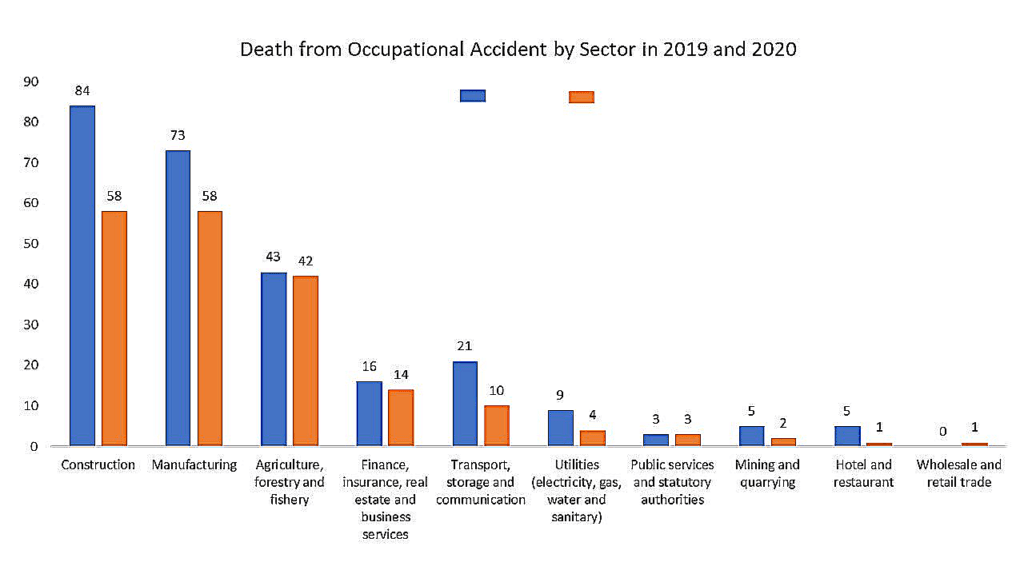Construction Safety Innovations Southeast Asia is rapidly adopting innovative measures to reduce the high-risk environment faced by workers. Traditionally, construction sites have been among the most dangerous workplaces, with a fatal accident rate three to six times higher than other industries. In Indonesia, for example, construction-related accidents account for 30% of work incidents, impacting 6.7% of the workforce. The safety culture there is still lacking, with insufficient monitoring and limited safety training, highlighting an urgent need for improvement.
However, Southeast Asia is now seeing major shifts in safety protocols, driven by new technologies and strategies aimed at reducing the risk of workplace accidents. One of the key approaches being embraced across the region is the Design for Safety (DfS) concept. This initiative focuses on integrating safety measures at the design and planning stages of construction projects, helping to mitigate risks before construction even begins.
The Impact of Design on Safety in Construction Safety Innovations Southeast Asia

Research has shown that design decisions made in the early stages of construction can have a profound effect on worker safety. A study in America found that 42% of construction-related accidents are directly linked to design choices. This gave rise to the Design for Safety (DfS) movement, which aims to reduce health and safety risks through thoughtful planning.
Countries like Australia and Singapore have already implemented DfS strategies, requiring designers to prioritize safety in their projects to ensure Construction Safety Innovations Southeast Asia. In Singapore, the Workplace Safety and Health Council introduced DfS guidelines in 2008 to ensure safety risks are considered during the design phase.
Both Malaysia and Thailand have also embraced the DfS concept. The Malaysian government introduced regulations to ensure designers address safety risks early in the project lifecycle. Similarly, Thailand’s construction sector has adopted DfS practices to reduce accidents and improve overall safety. These regional developments demonstrate the growing recognition of DfS as a critical component of Construction Safety Innovations Southeast Asia.
Technological Advancements Improving Safety
Technology is playing a central role in improving Construction Safety Innovations Southeast Asia on construction sites. Mobile apps, artificial intelligence (AI), and wearable technology are revolutionizing how construction safety is managed. For example, mobile apps have replaced outdated paper-based safety processes with efficient digital platforms, making it easier to report incidents and ensure compliance with safety protocols.
AI has become an essential tool for predicting and preventing accidents. By analyzing historical data, AI can identify patterns and predict potential safety risks before they occur. This allows construction teams to take proactive measures, improving the safety of workers on site.
Moreover, wearable technology, such as smart helmets and exoskeletons, is also transforming the Construction Safety Innovations Southeast Asia. These innovations help monitor workers’ environments in real-time, alerting them to potential hazards and reducing physical strain during demanding tasks. Drones are being used to monitor construction sites from above, providing project managers with valuable insights to optimize safety and workflow.
Singapore Leading the Construction Safety Innovations Southeast Asia
Singapore has emerged as a leader in construction safety, with one of the lowest workplace incident rates globally. Despite this, 2022 saw a rise in workplace fatalities, prompting the government to take action. The Ministry of Manpower declared a “safety time-out,” forcing companies to reevaluate their safety procedures and imposing stricter penalties on violators.
The Singapore government has also made substantial investments in construction technology, with the Building and Construction Authority forecasting S$27-32 billion in construction contracts. New technologies in Construction Safety Innovations Southeast Asia, such as prefabrication and IoT networks, are enhancing both productivity and safety. Government boards, which oversee the majority of construction projects in Singapore, now require the use of safety technologies on sites. This includes AI-driven solutions to monitor worker behavior and ensure compliance with safety protocols.
As Southeast Asia continues to modernize its construction industry, the adoption of innovative safety technologies and design strategies like DfS is crucial. Countries such as Indonesia, Malaysia, and Thailand are making strides in improving Construction Safety Innovations Southeast Asias, drawing on successful models from Australia and Singapore. With continued focus on technology and safety innovation, Southeast Asia is on track to create safer, more efficient construction environments. We can’t forget that we need to protect the workers who help build the future.

